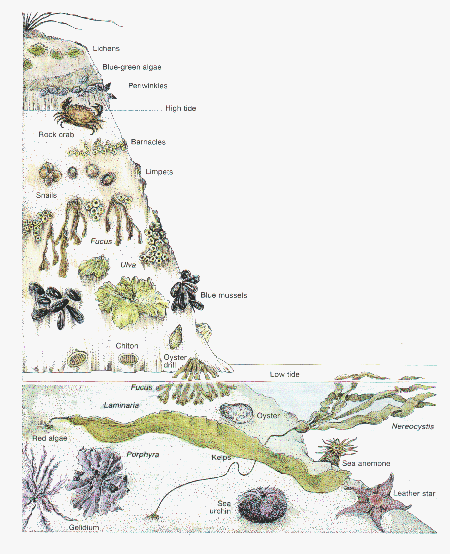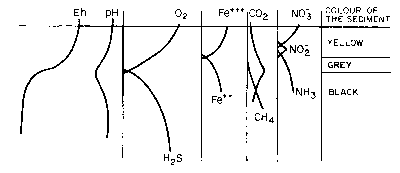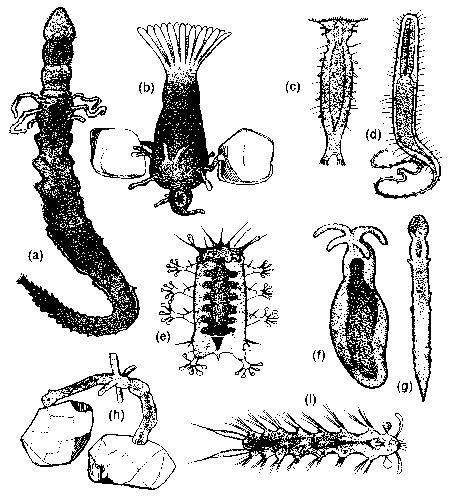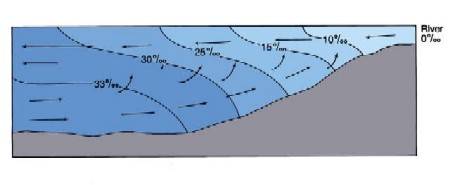1. Rocky shores - intertidal communities
- Harsh environment: loss of water at low tide; physical forces of waves; variation in temperature; UV radiation; ice formation; variation in salinity (rain exposure)
- Adaptation to life between water and air:
- Hard shells and solid attachement against wave action
- High temperature and water-loss tolerance (60-90% of water in some algae)
- Retreat into shells and housings at low tide to minimize water loss and exposure to grazers
- Synchronized spawning
- Cluster formation
- Kelp forests: large brown algae, outside the 20°C isotherms, sublittoral down to 20-40 m depending on water clarity; Growth rates up to 50 cm per day; high primary production and habitat for numerous microalgae and animals

- Wave action makes the beach best for infauna
- Typically shallow slope: sand drains and dries slowly
- Remember vertical oxygen gradient in sands and muds with hydrogen sulfide (H2S) at deeper layers! Slow draining of sand causes little water and oxygen exchange at depth
- Primary production: microalgae (diatoms), few macroalgae
- Low diversity in macrofauna, but meiofauna most diverse, including the unique interstitial fauna
- Vertebrate animals include flat fish, and birds are important grazers
- Most infauna is mobile
- Most infauna (98%) do not produce planktonic larvae
- Often, only one to few eggs are produced, and often parents bread and take care of their offspring


Examples for interstitial fauna
- An estuary is a coastal embayment isolated from open ocean conditions, whose waters are diluted by freshwater input from rivers. Estuaries are classified by their circulation patterns, and by the vertical distribution of salinity.
- Salt wedge estuary: controlled by rate of river discharge in a thin layer above a salt wedge
- Partially mixed estuary: strong surface river flow and strong inflow of seawater at the bottom
- Well mixed estuary: strong tidal mixing and low river flow
- Fjord-type estuary: least mixed, weak tidal flows, stratification; fresh water at the surface, seawater enters slowly at depth. The bottom water in fjords may become stagnant and anoxic due to slow rate of replacement.



